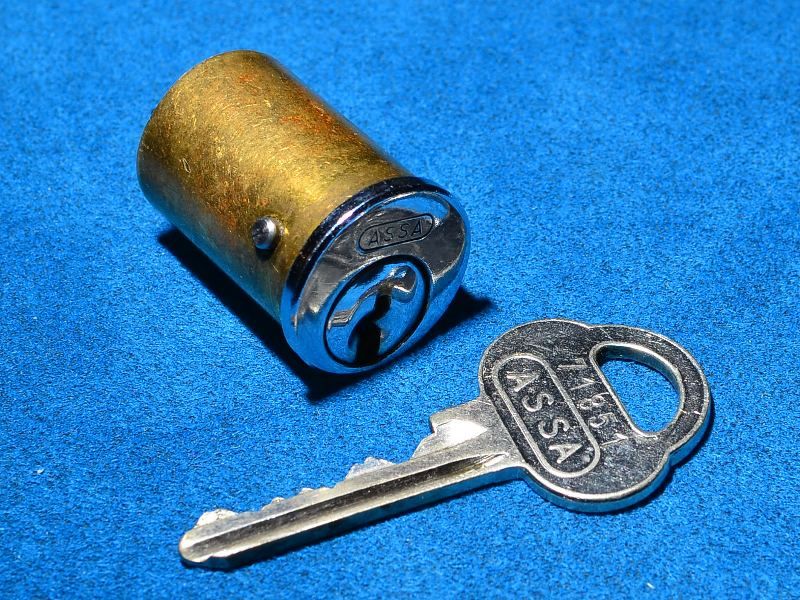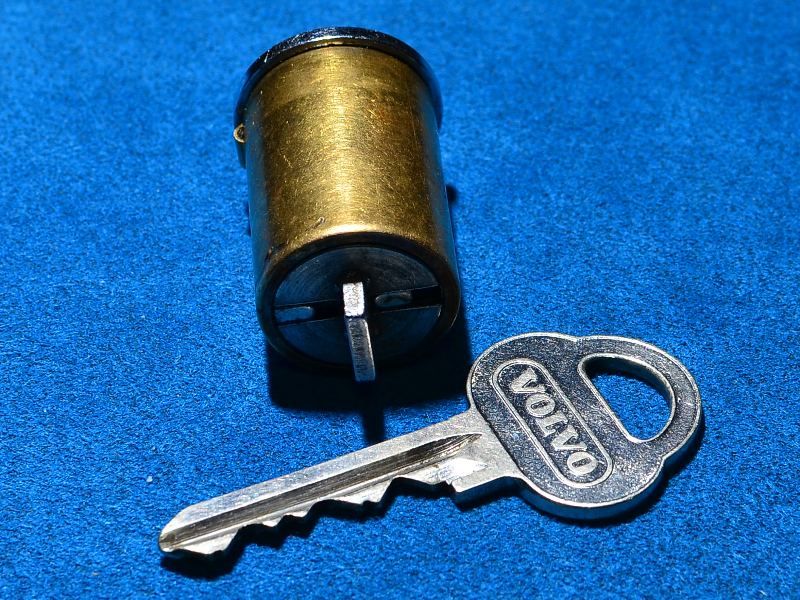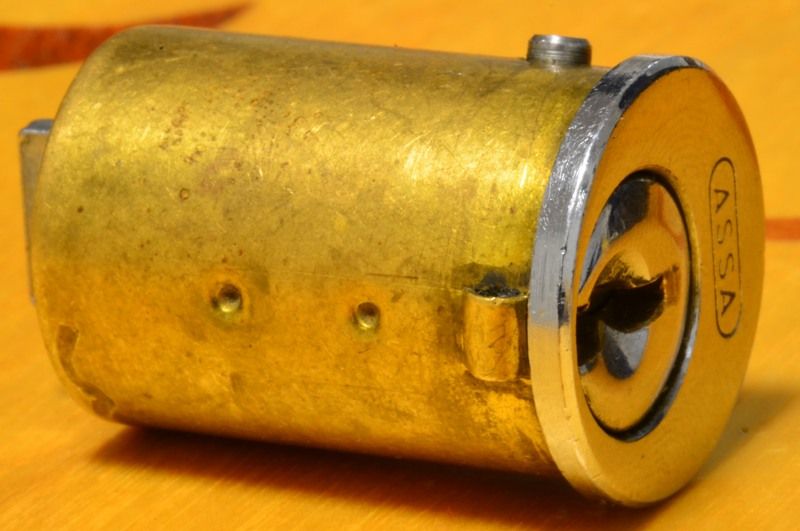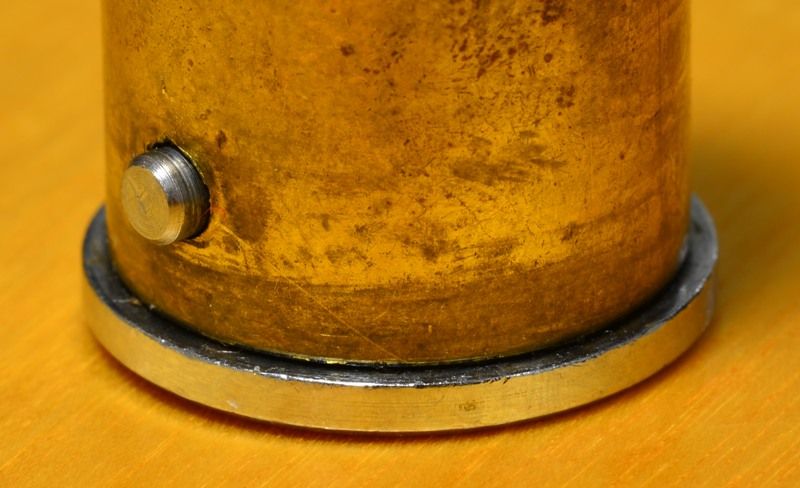lockcat wrote:I think that the back cover might bo held in place by a brass sleeve that would cover the cilinder and be held in place using the 2 "dimples" and the retaining pin.
Zing! You can receive your token at the cashier´s desk.

I just couldn´t let it be, so here goes... I tested that control pin and initially didn´t get it working. But the trick was not to turn the key all the way but only about 30 degrees CW. Then it goes in enough to let the housing glide away. In theory. There are those dimples that are punched to pin holes, they give more friction to keep it in place. I killed this housing with pliers and removed one dimple. Then I gave it some hammer time and it slowly started to dismantle. Very tight fit. The milling is also so coarse that there is even more friction.
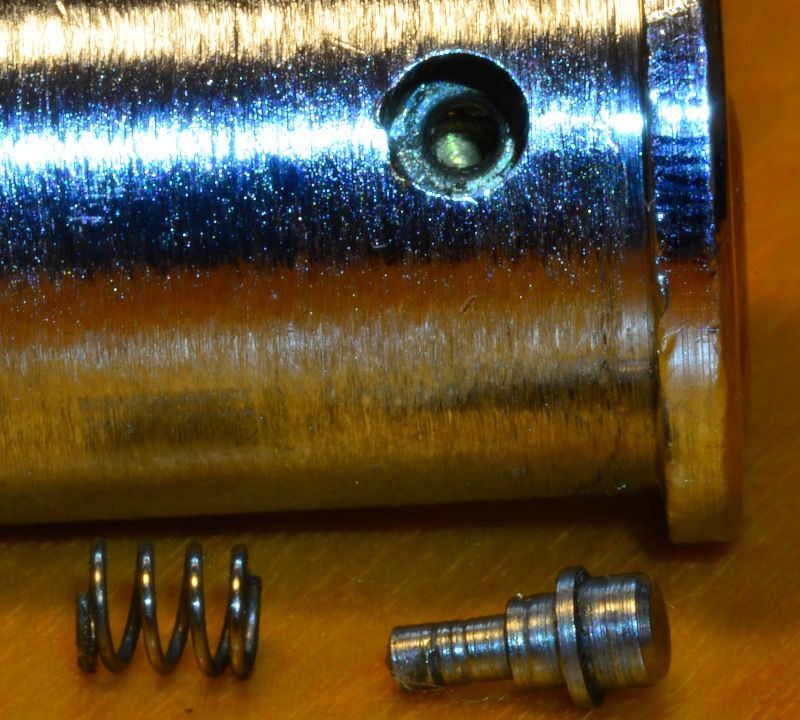
And there was DIRT inside. More than I have ever seen. These pins didn´t come out easily, holes were filled with debris. Springs rest at the brass housing.

This housing can now be put back and this lock is still ok to be picked. Not nice but it works.

The mechanism is quite complex, engineers have had too much time to spend... There is red circle which shows the rivet keeping the back cover at place. I can´t take the plug out unless I drill that rivet but compressed air is enough to get this lock back to life.
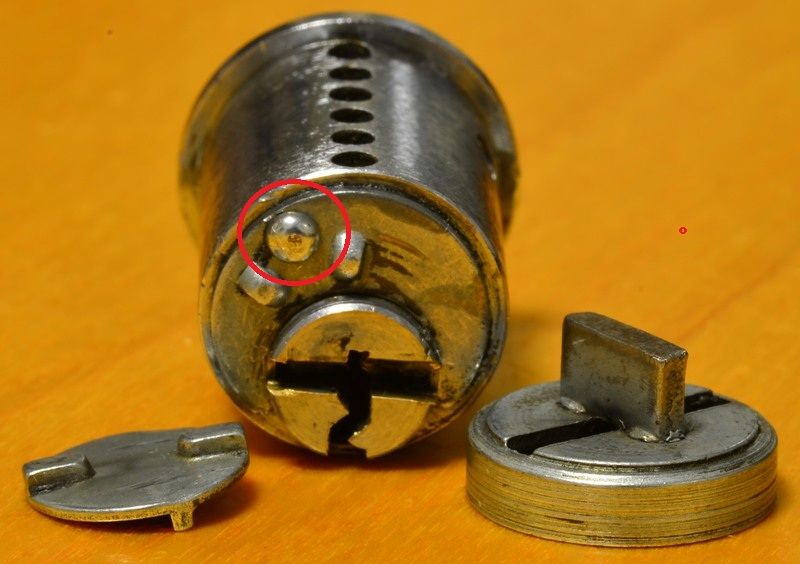
And finally the pins, there were some spools inside:
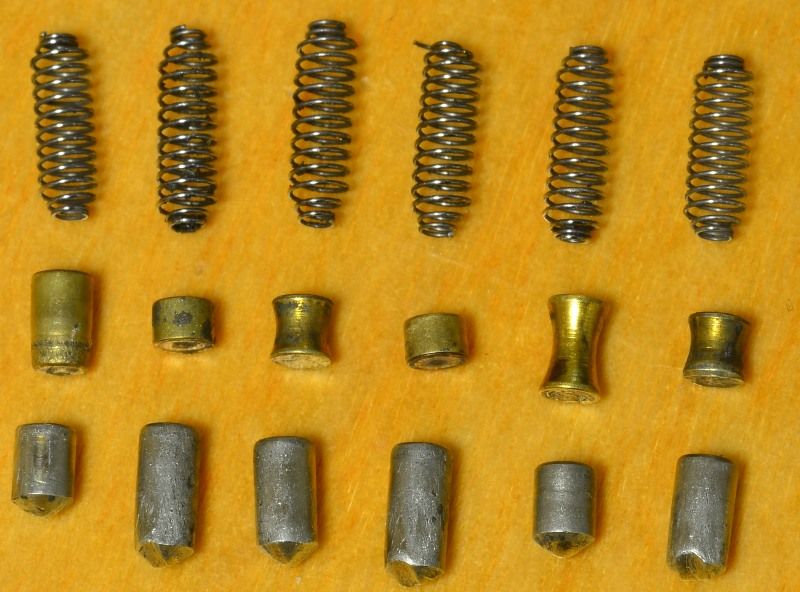
This lock has been severely abused, that debris has grinded these pins quite much. And I think the reason why this lock came to the flea market was that even with the right key it doesn´t work just properly anymore. Pins are so worn that they don´t go smoothly to the shear line. This pin has shortened a lot from its original measure.

I wouldn´t take this lock apart if it was still needed by customer. Very hard or nearly impossible to get it out intact. Its housing is so thin that you can´t press it from outside when trying to take the core out.
Thank you all for your input, I rest my case.
